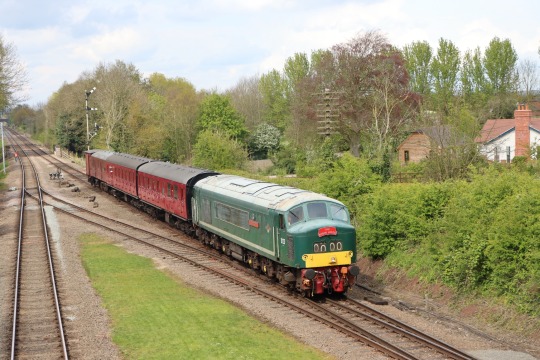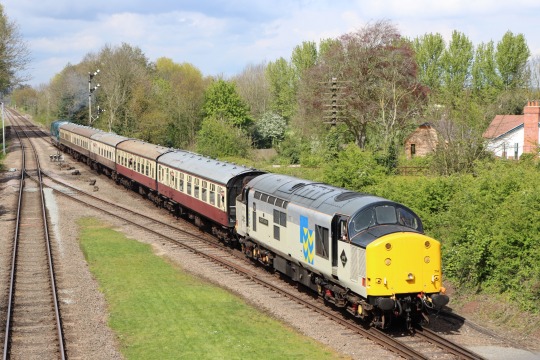#Great central railway
Text
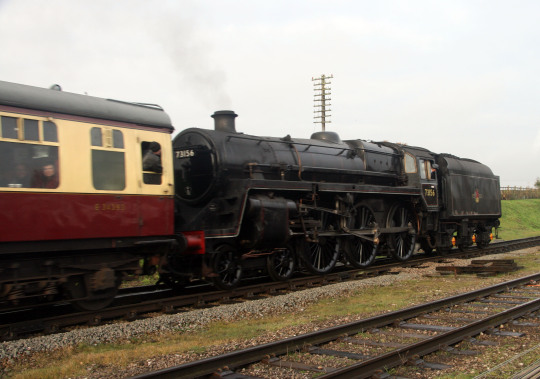
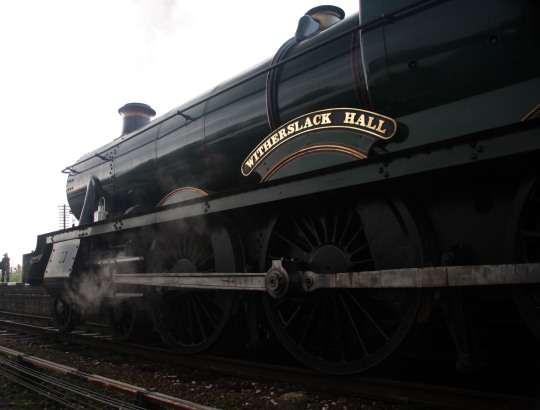







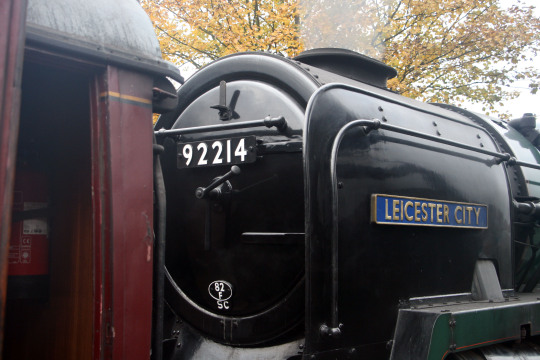
Great Central Railway, Last Hurrah Gala 2019 (Part 1)
#steam locomotive#england#winter#photography#steam engine#steam train#train#engine#locomotive#Great central railway#GCR#LMS#LNER#british railways#smoke#steam#photograph
86 notes
·
View notes
Video
Oliver Cromwell with freight train on the Great Central Railway, UK. por Ian Silvester
Por Flickr:
A charter on the 17th January 2012
9 notes
·
View notes
Text
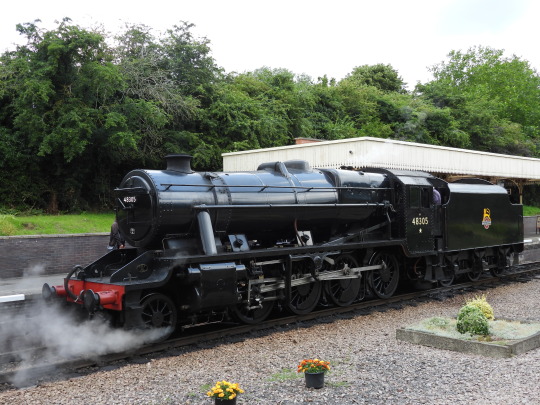
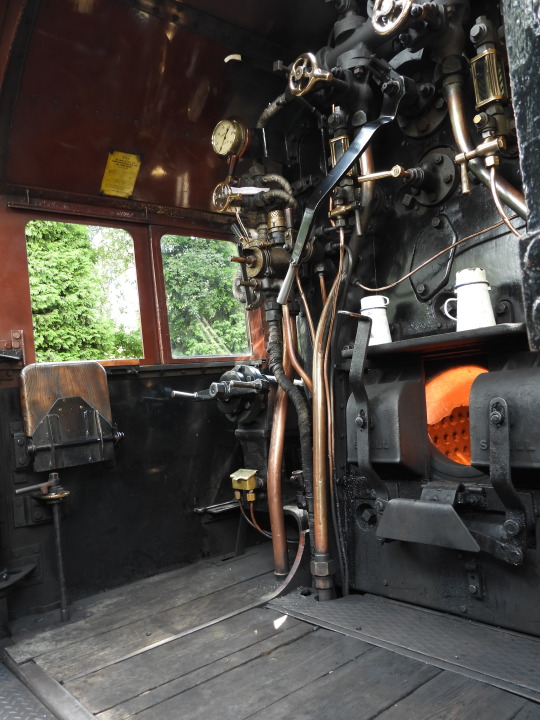

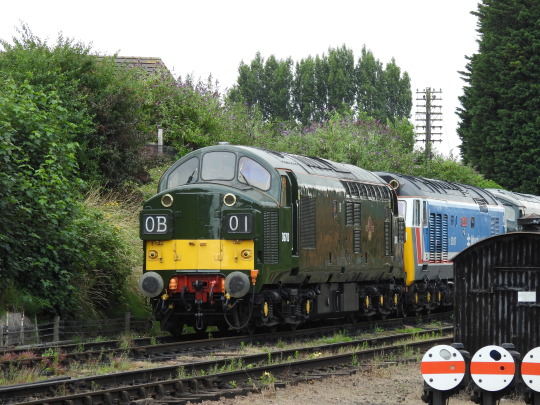



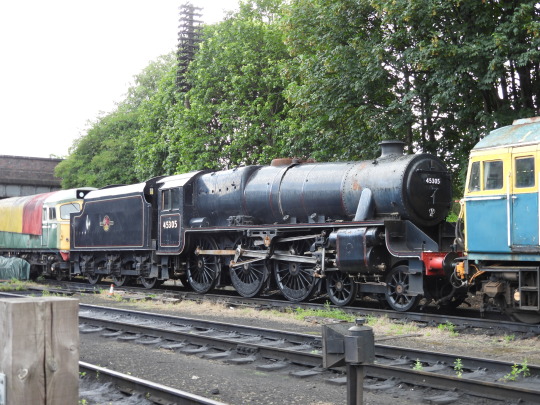


train day at the Great Central Railway!
5 notes
·
View notes
Video
RPPC of Great Central Railway loco No. 969 @ Trafford Park by Frederick McLean
Via Flickr:
An old RPPC of Great Central Railway (GCR) steam locomotive No. 969 outside Trafford Park engine/locomotive shed (13A). This real photo postcard was produced by 'F. Moore's Railway Photographs' of London, in the very early 1900s. It is annotated with "outside Trafford Park shed". No. 969 was a X4 class 4-2-2 engine, built in the Gorton Works, and new to GCR in Aug 1900. In 1923 the existing railway companies were grouped into 'the big four', the GCR becoming part of the London and North Eastern Railway (LNER) who renumbered the engine as 5969 in Aug 1924. The locomotive was withdrawn from service in Jul 1926, then scrapped back at the Gorton Works. Old/new overhead maps view of shed and sidings:- maps.nls.uk/geo/explore/side-by-side/#zoom=16.0&lat=5... If there are any errors in the above description please let me know. Thanks. 📷 Any photograph I post on Flickr is an original in my possession, nothing is ever copied/downloaded from another location. 📷 -------------------------------------------------
#Great Central Railway#postcard#old postcard#photo postcard#vintage postcard#railway#steam engine#steam train#steam locomotive#steam loco#locomotive#loco#old steam engine#Trafford Park shed#Trafford Park#engine shed#locomotive shed#X4 class#London and North Eastern Railway#LNER#GCR#4-2-2#Gorton Works#flickr
0 notes
Text

Chilling half way through my walk. Have seen 3 dogs and a deer.
0 notes
Text
Having revealed my OCs from from the Burlington Route, Chicago & Northwestern, Milwaukee Road, Chesapeake & Ohio, and Baltimore & Ohio… I do have more OCs from nine additional railroads, and they are the…

Union Pacific ✅
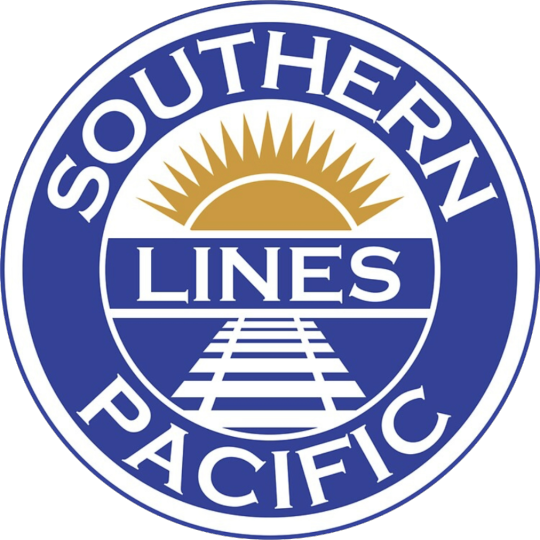
Southern Pacific ✅
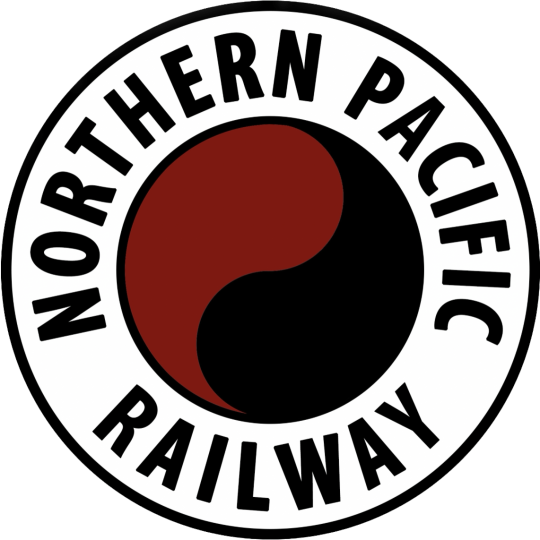
Northern Pacific ✅
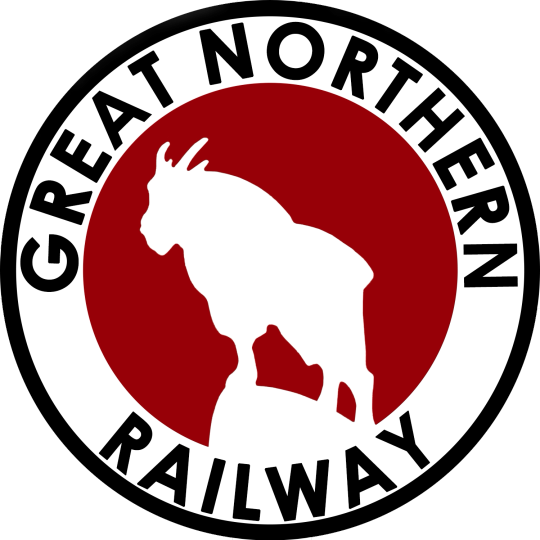
Great Northern ✅

Santa Fe ✅

Norfolk & Western ✅

Southern Railway (USA) ✅
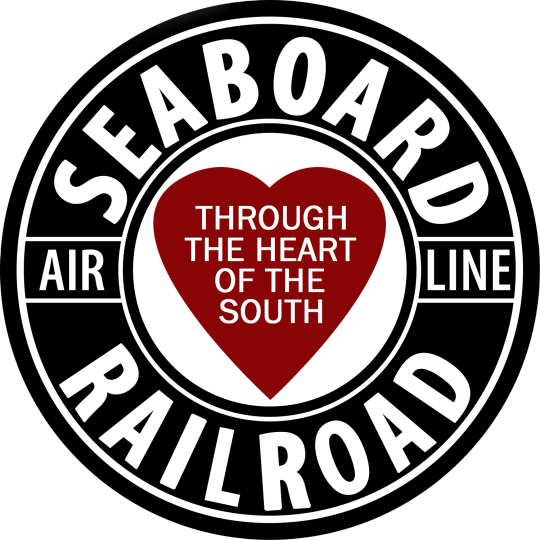
Seaboard Air Line ✅
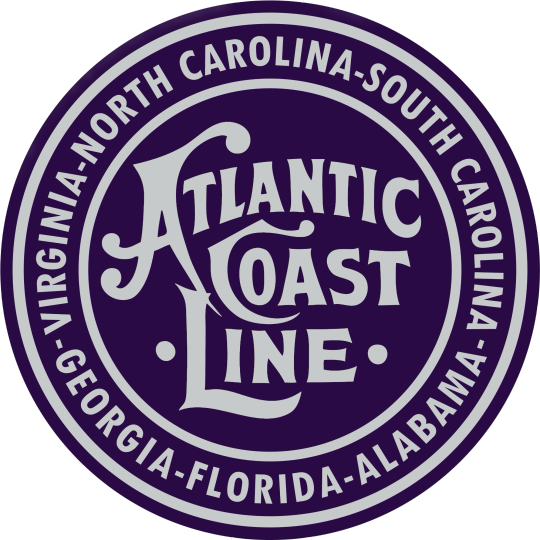
Atlantic Coast Line ✅
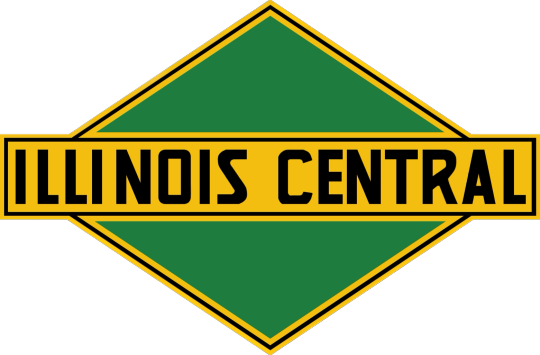
Illinois Central ✅

Gulf, Mobile and Ohio ✅
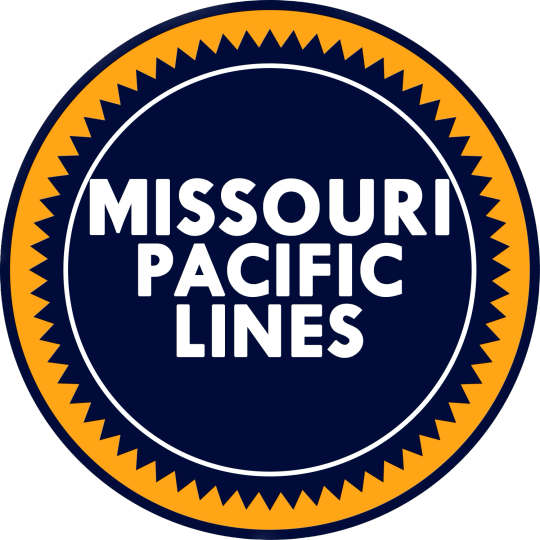
Missouri Pacific ✅

Rock Island Railroad ✅
P.S.: a ✅ will show that I’ve completed the specific railroad.
#union pacific#southern pacific#northern pacific#great northern#santa fe#norfolk and western#southern railway#seaboard airline#illinois central#thomas and friends#thomas the tank engine#ttte#ttte oc#the genie team#gulf mobile & ohio#atlantic coast line#missouri pacific
12 notes
·
View notes
Text

"RAILROAD TO IMPORT SOUTHERN NEGROES," Toronto World. May 16, 1918. Page 1.
----
St. Thomas, May 15. - Owing to the drastic shortage of firemen on the railroads in St. Thomas, caused by the amendment to the Military Service Act, the Pere Marquette Railroad is making preparations to bring in a large number of southern United States negroes to this city and other divisional points and speedily train them for the duties of firemen. No less than fifty firemen on this line from here have been taken on military duty during the past ten days, and it is impossible to run the road without that help.
It is understood provision has been made by the United States authorities and our government to carry out this movement. If the scheme, works out satisfactorily the Michigan Central and Wabash, who are suffering just the same shortage of help, will adopt the plan. It is not known how the brotherhood and other unions will receive this new departure.
#st. thomas#military service act#railway workers#railway capitalism#labour shortage#pere marquette railroad#michigan central railway#african americans#great migration#working class struggle#working class politics#racism in canada#railway union#world war 1 canada
0 notes
Photo
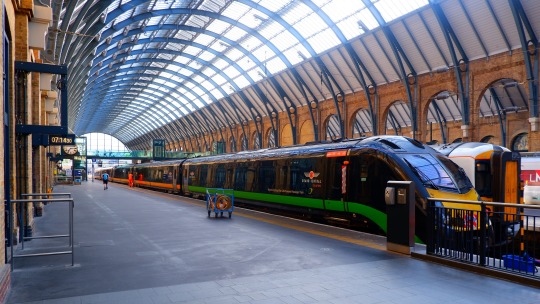


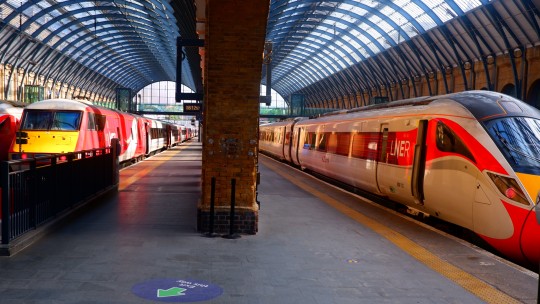



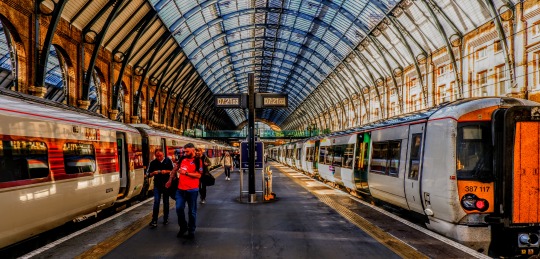


One of the most iconic railway buildings celebrates its 170th birthday alongside the Queen's Platinum Jubilee, and having got a few photos with the intention of featuring it on my travels through London earlier this year, I completely forgot about it (as I do) until last month. Then, doing a little research, I found out that it opened on the 14th of October. "Very well, I thought, I'll wait till October then." Surprise, surprise, I forgot about it again, until today, and lo & behold, it's the 14th of October. So alongside a few feature photos of the lovely architecture and the variety of trains using the station, here's a flashback to the 170th anniversary celebrations at King's Cross over the Platinum Jubilee Weekend, featuring posters showing photos of the station as it looked in various eras, as well as performances of music from the different eras of Queen Elizabeth's reign.
Built by the Great Northern Railway as the terminus for the East Coast
Mainline, the station has seen some of the grandest & most famous trains in Britain at its platforms from Flying Scotsman & Mallard to the Intercity 125, Intercity 225, and more recently, the IET Azumas. It is the terminus for services on the ECML to Scotland & Northeast England as well as Great Northern Mainline services to West Anglia.
Architecturally, King's Cross was a bold statement at the time of construction, but today, it's something of a reminder that classical architecture doesn't have to be all grand but not very functional. It's subtle detailing and ample glass give it a hint of modernity which also goes to show how we could design buildings that adhere to the principles of classical architecture while meeting the demands of modern society.
#King's Cross#railway station#London#Great Britain#LNER#East Coast Mainline#Great Northern Railway#classical architecture#British Railways#heritage#culture#National Rail#Grand Central
1 note
·
View note
Text
Planting trees does not necessarily mean a forest is being restored.
---
But efforts to increase global tree cover to limit climate change have skewed towards erecting plantations of fast-growing trees. The reasons are obvious: planting trees can demonstrate results a lot quicker than natural forest restoration. This is helpful if the objective is generating a lot of timber quickly or certifying carbon credits which people and firms buy to supposedly offset their emissions. [...] [I]ll-advised tree planting can unleash invasive species [...]. For more than 200 years India has experimented with tree plantations, offering important lessons about the consequences different approaches to restoring forests have on local communities and the wider environment. This rare long-term perspective should be heeded [...].
Britain extended its influence over India and controlled much of its affairs [...] from the mid-18th century onwards. Between 1857 and 1947, the Crown ruled the country directly and turned its attention to the country’s forests. Britain needed great quantities of timber to lay railway sleepers and build ships in order to transport the cotton, rubber and tea it took from India.
Through the Indian Forest Act of 1865, forests with high-yielding timber trees such as teak, sal and deodar became state property. To maximise how much timber these forests yielded, British colonial authorities restricted the rights of local people to harvest much beyond grass and bamboo. [...] Meanwhile plantations of teak (Tectona grandis), a species well adapted to India’s hot and humid climate and a source of durable and attractive timber, spread aggressively. [...]
---
[G]rasslands and open scrub forest gave way to teak monocultures.
Eucalyptus and other exotic trees which hadn’t evolved in India were introduced from around 1790. British foresters planted pines from Europe and North America in extensive plantations in the Himalayan region as a source of resin and introduced acacia trees from Australia for timber, fodder and fuel.
One of these species, wattle (Acacia mearnsii), first introduced in 1861 with a few hundred thousand saplings, was planted in the Nilgiris district of the Western Ghats. This area is what scientists all a biodiversity hotspot – a globally rare ecosystem replete with species. Wattle has since become invasive and taken over much of the region’s mountainous grasslands.
Similarly, pine has spread over much of the Himalayas and displaced native oak trees while teak has replaced sal, a native hardwood, in central India. Both oak and sal are valued for fuel, fodder, fertiliser, medicine and oil. Their loss [...] impoverished many.
---
India’s national forest policy [...] aims for trees on 33% of the country’s area. Schemes under this policy include plantations consisting of a single species such as eucalyptus or bamboo which grow fast and can increase tree cover quickly, demonstrating success according to this dubious measure. Sometimes these trees are planted in grasslands and other ecosystems where tree cover is naturally low. The result is that afforestation harms rural and indigenous people who depend on these ecosystems [...].
In the Kachchh grasslands of western India communities were able to restore grasslands by removing the invasive gando bawal (meaning “mad tree”) first introduced by British foresters in the late 19th century. [...]
The success of forest restoration efforts cannot be measured by tree cover alone. The Indian government’s definition of “forest” still encompasses plantations of a single tree species, orchards and even bamboo, which actually belongs to the grass family. This means that biennial forest surveys cannot quantify how much natural forest has been restored, or convey the consequences of displacing native trees with competitive plantation species or identify if these exotic trees have invaded natural grasslands which have then been falsely recorded as restored forests. [...]
Planting trees does not necessarily mean a forest is being restored. And reviving ecosystems in which trees are scarce is important too.
---
Text by: Dhanapal Govindarajulu. "India was a tree planting laboratory for 200 years - here are the results." The Conversation. 10 August 2023. [Bold emphasis, some paragraph breaks/contractions, and italicized first line in this post added by me.]
141 notes
·
View notes
Text

1918 A woman railway worker operating the signals in a signal box on a siding on the Great Central Railway, Birmingham, England. From Mikki's 1900-1919 History Resource, FB.
137 notes
·
View notes
Text



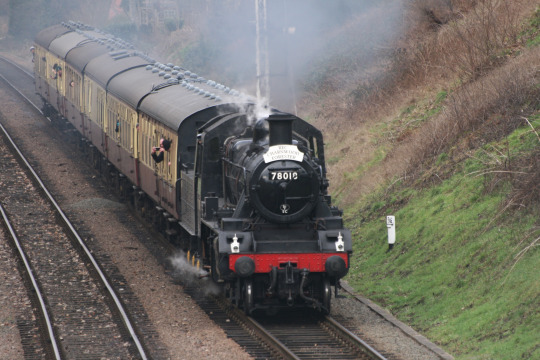
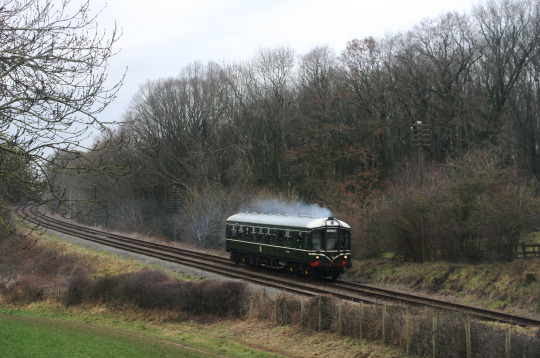

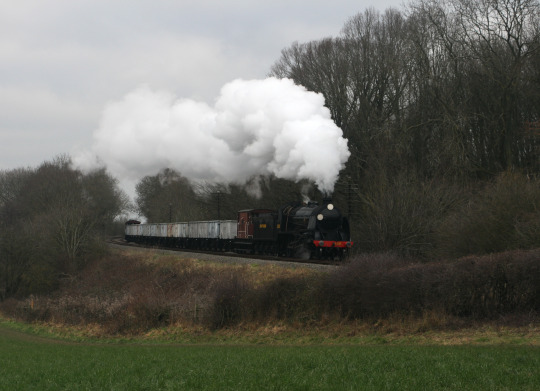

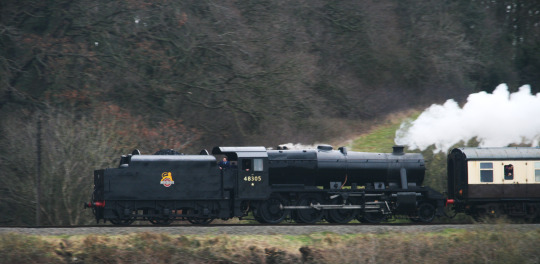



Great Central Railway, 2023 Winter Gala (Part 3)
#steam locomotive#england#winter#photography#steam engine#steam train#train#engine#locomotive#Great central railway#GCR#LMS#LNER#british railways#smoke#steam#photograph
46 notes
·
View notes
Text
The shapes of railway networks
A while ago @ariadsishereagain asked me about countries that have no railway networks, and what I think of them. That's a fascinating question that has been in my mind ever since, because the truth is you can tell a lot about a country and in particular it's history during the 19th and early 20th century by its railway network. So let's do that. And the best way to do that is by looking at the incredibly detailed open-source world railway map OpenRailwayMap, a part of the OpenStreetMap project. I really recommend it! And let's start with one of my favorite examples of how railway networks differ:

At this zoom level the site sadly only shows incomprehensible internal abbreviations rather than city names, so let me explain: What we have here are France and Germany, along with some of the UK and Italy, some of various neighbouring countries and all of Switzerland, Belgium and Luxembourg.
France and Germany are the ones that I find the most interesting, because the shapes of their networks are so different. Not only is the german one much more dense, but you can see completely different patterns.
In France, the job of railroads is to bring people to Paris (PLY, short for Paris Gare de Lyon) The lines stretch out into every part of the country, but almost all of them converge onto mainlines going into Paris. You can see some lines along the coasts and the borders, and there is a medium distances circle around Paris (passing MZ, DN, TO, short for Metz, Dijon, Tours). This whole pattern is known as the Legrande Star, after Baptiste Alexis Victor Legrande, the french government official who designed it. His goal was to provide great access to Paris, the nation's undisputed political, cultural and economical centre. A couple of decades later, Charles de Freycinet added plans to connect all departments to the railway network, but he still followed the idea that the ultimate goal of almost every rail line was Paris. And so it was, and largely remained. Even the high speed lines, in red, follow this pattern to this day.
A result is that you will have to go to Paris whether you want to or not. Lille-Strasbourg? You're going through Paris. Bordeaux-Dijon?

You're going through Paris, and get to make your own way from Gare Montparnasse to Gare de Lyon on the Metro (and it isn't even a direct metro, you have to change trains). It's a massive detour but it's not like you have a choice.
Even if there is a direct TGV or a connection outside the main stations of Paris, you're still ending up very much near Paris; the difference is just that you're not going via the city centre, but rather via Disneyland. Legrande wanted to bring people to Paris; he was less concerned about connecting other places with each other.
Now compare Germany, and you will see a network that is more dense, but most importantly, utterly chaotic. You can see hints of a France-like star around Berlin (BSPD, short for Berlin Spandau, which isn't the most important station but what can you do), but it's really only dominating its immediate surroundings, the region of Brandenburg. You can see vague hints of a similar star around Hamburg (AH; don't ask) or Munich (MH), but also a massive tangle around the Rhine-Ruhr industrial area (around KD), or around the Frankfurt am Main area (FF). Red high speed lines are essentially random. Some of them do go to Berlin, sure. But many, like the one from Cologne to Frankfurt (KD to FF) or the one from Hanover (HH) south, do not.
And that really reflects the history. Germany wasn't a unified country when railroad construction began, and even though it did unify shortly thereafter, there's no hiding that its different parts developed separately, with no central planning, ever since the middle ages. Germany doesn't have a single central city like France. Berlin is the biggest and most important city, but not by far. Hamburg has huge cultural and industrial influence, Frankfurt is the most important financial centre and airport, Munich is huge, and there are agglomerations like the Rhine-Ruhr region that used to beat all of them in terms of industry. And the rail network, with no single central focus point, reflects that.
That doesn't mean Germany doesn't have its own blind spots. Due to being split in two, the east-west links aren't great. Getting e.g. from Cologne (near KD) to Dresden (DH) is pretty painful. Ironically, Berlin is one of the places that really suffers from this. There are plenty of trains to it from Cologne but they take forever, and you can see why: A lot of the route isn't high speed, it's just more or less upgraded normal lines. If you have a single destination, then it's easy to build all the lines there. If you want high-speed connections between everything, that's more difficult. (Also, our government isn't investing anywhere near enough into the rail network, both compared internationally and on its own terms, but that's a different issue)
Other countries in Europe tend to be somewhere between the extremes. Spain is fairly centralised around Madrid.
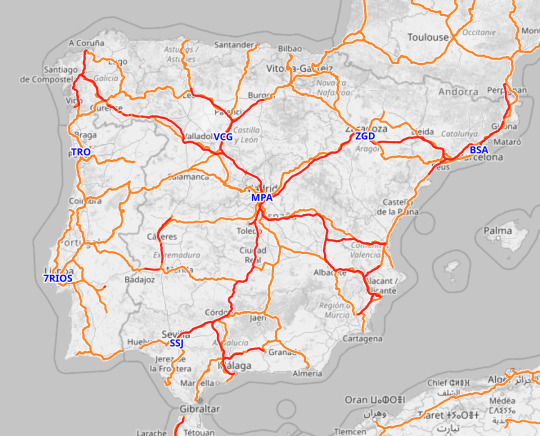
The UK is just as focused on London as France is on Paris, but it has strong regional networks around Leeds and Sheffield, and the weirdness in Scotland (four different lines between Glasgow and Edinburgh and counting!).
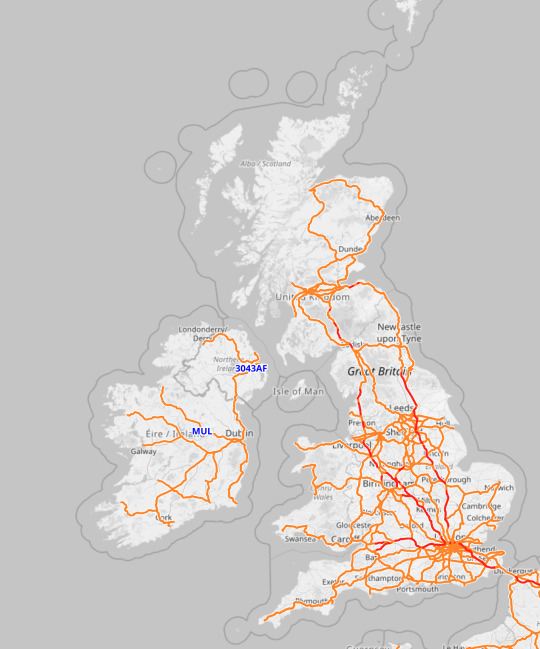
Italy, especially south of the Po valley, almost looks like a ladder: Lines are either on the one side of the Apennines or the other, with a few brave ones crossing through.
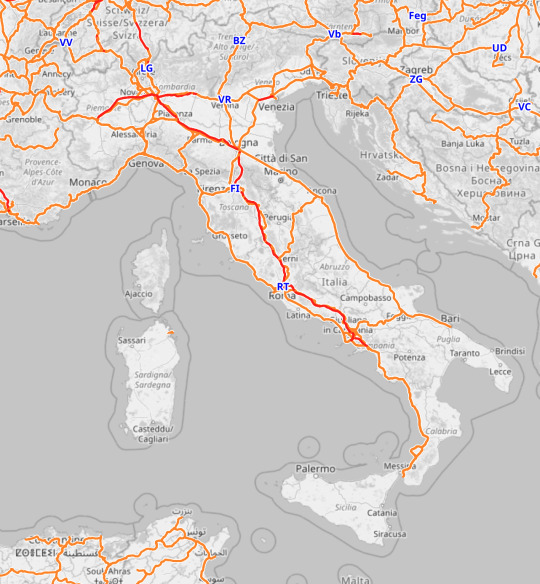
This works overseas as well. Describing the continental US as "like Germany" is certainly going to raise some eyebrows, but the map doesn't lie:
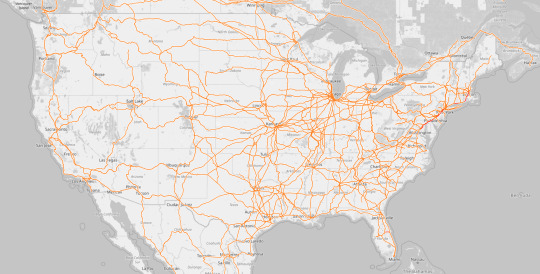
It's all on a completely different scale, but it's also a federal country with no one single clear centre. Yes, New York and Los Angeles are big and important, but neither is an all-powerful centre of the nation. What's fun about the US is that it's almost gradient-like: The more west you go, the fewer the railroads get. You can also nicely see the Alleghenies by the shadow they cast: Just a few brave rail lines managed to make their way through or around. Other characteristic items are the huge tangle that is Chicago, the closest thing the US has to a railroad capital; and the many places where lines are almost duplicated (just count how many different ways you can get from Chicago to Memphis, or Chicago to Cleveland), thanks to different competing railway companies that all hated (and sometimes still hate) each other's guts.
So that's what's mostly considered the "western world" or "industrialised world". I skipped Japan, China and India because the post is going to get too long no matter what, but they're all fascinating as well.
But if we go away from there look at countries where the colonialism was less settlers and more exploit mostly from afar, we see another very odd pattern emerge, like here in sub-saharan Africa:

The selection is somewhat arbitrary because you can find the same pattern everywhere south of the Sahara, and in one case (Mauretania) even in the Sahara: A railroad that goes straight to the coast. (The isolated sections inland are due to issues with the map software, they're all connected to one of the lines to the coast)
This kind of railroad is designed to extract a country's resources, and not much else. In Mauretania (not in this picture), that's iron ore. Elsewhere it might have been other ores, precious metals, gemstones, but also very often agricultural products, spices, dyes. The railway line exists to take these things, and bring them to a port. The line is not designed to actually help the nation grow economically. Think about it: All things being equal, you're probably just as likely to want to go parallel to the coast as perpendicular to it.
Also, each of these lines were built because there's something interesting at the end of it, or at least someone suspected there might be. If you wanted to develop the area, it would make sense to trade the interesting stuff in Togo with the interesting stuff in Benin. But the railway lines are not set up for that at all. The goal is to get the interesting stuff to a ship, and occasionally soldiers to the place where the interesting stuff comes from.
These days, the area that I screenshotted here is actually massive, full of people. The city of Abidjan has more than four million inhabitants (more than Berlin), Lomé has 1.7 million, Cotonou and Porto-Novo come close to a million if taken together, and nobody's quite sure about Lagos, but it's at least 14 million, and the metropolitan region might be 24 million. This is a band of cities that researchers think might, in the next few decodes, become on par with Washington-Philadelphia-New York-Boston in the US, or the Tokyo-Osaka in Japan.
And the rail connections in this region do not reflect this at all. A high speed passenger line and/or a heavy duty freight line could allow all these places to do business with each other, allow people to move to or visit each other, and just spur a lot of economic development. But the powers that built the lines, the colonial powers, were not interested. They had their harbour, and the region behind it, and they just wanted to extract whatever was there.
To be clear, that does not mean the railroads are evil now. Selling natural resources is still better than bringing no money into the country. And there are a lot of places where railroad junctions and depots became the point where cities were founded, so in some countries these lines do end up connecting the most important cities, more or less by accident. It's just that other lines or more lines are sorely missing.
A simple example for how this could look like is provided by Australia, where the colonists were settlers and did want to develop the land economically:

You have the lines from the coast inland, and sometimes quite a lot of them. But you can also see a line along the east coast, connecting the cities, and you can see that someone said "we need to build a railroad across the entire continent. No, two actually". That is not to say that Australia does everything right with railroads, they have a lot of weirdness there. But you can see that the railroads had more jobs than to just move resources to ships.
(The big exception is the Pilbara region, in the north west, with its odd tangle of lines. Those are all just resource extraction lines, where the world's heaviest freight trains haul iron ore from various mines to various ports. The mines and ports are owned by different mining companies that don't like each other, so everybody has their own line from their own harbour to their own mine, even if a different line would have been shorter. That's why you get the tangle there.)
So, that's basically it. The railroad map of a country shows you a lot about how a country works, and more specifically how it worked during the late 19th and early 20th century, when most railroads were built. Where they lead to and where they don't reflects what planners thought of as important, and in turn, it has shaped the way these countries developed. And personally, I always find this endlessly fascinating.
#railroads#maps#i suppose you could take the 6 to bercy and walk from there but it's still not exactly convenient
299 notes
·
View notes
Text



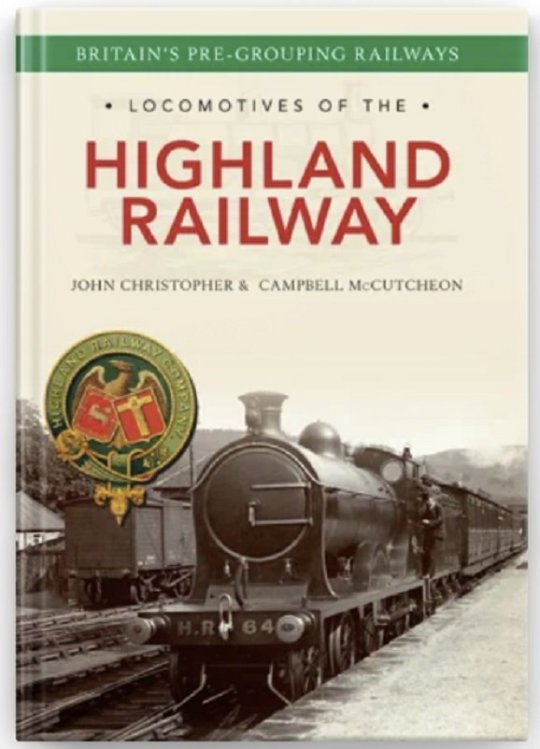

On February 1st 1865 the Highland Railway was formed from the amalgamation of Inverness and Perth Junction and the Inverness and Aberdeen Junction Railways.
Back in the day every region had it’s own local railway company covering the different areas around the country. The Highland Railway ran from Perth in Central Scotland north to Inverness and then on up the east coast to Wick and Thurso. From Dingwall, the railway ran west to Kyle of Lochalsh to serve Skye and the Western Isles. From Inverness, another line ran east to Keith, where it connected with the line to Aberdeen. Several branches were built from this core network to serve nearby towns.
This is a longer post than I normally put together but hope you get an idea of how all these wee companies ran, and ended up becoming the one company, before of course the bigger companies ate them all up. Some of the stations are now gone, but others mentioned, like Kingussie, Nairn, Keith and Dunkeld survive to this day, and I often pass through them on my travels north. It also gives us an insight intothe infamous Beeching cuts in the 60’s which butchered the rail network, if Beeching had his way there would be no railways beyond Inverness!!
Inverness was always the centre of the Highland Railway. It was the company’s headquarters and principle station. All trains led to Inverness.
The original proposals to construct railways to Inverness were made in the mid-1840s. Rival routes were proposed from Perth and Aberdeen . The Perth & Inverness Railway was considered too hilly for the locomotives of the day, but the Great North of Scotland Railway (GNSR) from Aberdeen was authorised. The GNSR struggled to raise capital in the post-railway mania period and eventually started construction as far as Huntly in 1852, opening that line in 1854.
The people of Inverness then stepped in and started building their own line from the Inverness end, initially as far as Nairn, the Inverness & Nairn Railway (I&N) was opened on 6th. November 1855 but by then plans were being made to extend this railway to meet the GNSR. After some discussion, the Inverness & Aberdeen Junction Railway (I&AJ) was promoted to build the line from Nairn to Keith where it met the GNSR extension from Huntly. The I&AJ was completed on 18th. August 1858,when it took over the working of the I&N.
The people of Inverness were never satisfied with the long journey round via Aberdeen , especially as the GNSR’s station was half a mile from that of the line from the south and connections were not always maintained. Thus was born the Inverness and Perth Junction Railway (I&PJR) which ran from Forres via Grantown, Kingussie and Drumochter summit to Dunkeld where it met with end on with the Perth and Dunkeld Railway which had opened in 1856. The I&P was authorised in 1861 and opened just two years later, being worked from the outset by the I&AJR. The two companies amalgamated on 1st. February 1865 to form the Highland Railway.
Meanwhile construction northwards from Inverness had already started, with a line to Dingwall (1862), Invergordon (1863), Bonar Bridge (1864), Golspie (1868), Helmsdale (1871) and Wick and Thurso (1874). Westward from Dingwall, the Dingwall & Skye Railway was opened to Strome Ferry in 1870.
In the 1890s, two additions were made to the main network. The direct line from Aviemore over Slochd to Inverness was completed in 1898, a year after the Skye line was extended to the present terminus at Kyle of Lochalsh. Several branches were opened from these main lines over the next 40 years, taking the final length of the system to some 242 route miles.Tourist traffic has always been a major source of income for the railways in the Highlands . The Highland Railway developed its own hotels at Inverness , Dornoch and Strathpeffer. It offered combined tours in conjunction with the steamer services of David MacBrayne. Each August it had to contend with the annual migration north for the ‘glorious twelfth.’
The railway played a major part in the First World War, when the Grand Fleet was stationed at Scapa Flow in the Orkney Islands . Worn down, like many other railways in the country, it became part of the London , Midland and Scottish Railway in 1923. The LMS continued to develop the lines, introducing dining cars and speeding up services. The Second World War again imposed a considerable strain on the lines.
On the nationalisation of the railways, the Scottish Region of British Railways took over. Soon the development of road transport made a significant impact on the use of the railway. The closure of branch lines, which had started in the 1930s, continued. The Beeching Plan of 1963 envisaged the closure of all lines north of Inverness , but this was not approved because those lines still provided a lifeline in winter. The old route from Aviemore to Forres and a number of intermediate stations on the main lines, were closed. Otherwise the main system remained intact, as it does today. Currently operated by ScotRail, the lines continue to provide a vital link to locals and bring many tourists to the area.
The Highland Railway was well known for its locomotives. Working the steep gradients of the main line, in particular, was always a challenge. Add strong winds and snow and the problems became even worse. The railway introduced the first 4-6-0s to the British Isles, commemorated in the preserved No.103 at the Glasgow Transport Museum . In the 1930s, the LMS Black 5s, locally always called “Hikers”, immediately proved their worth. The isolated nature of the country led British Railways to implement complete dieselisation early in the modernisation plan.
Today class 158 and 170 diesel multiple units work most of the trains, but you can still retire to bed in a sleeper on the line out of London Euston and wake up to the sound of a Class 67 struggling up Drumochter.
39 notes
·
View notes
Text
Down the road from where I live a friend came across a man tearing down pictures of Israeli hostages. You’ve probably seen the portraits by bus stops and railway stations. Activists print them off from sites highlighting the hostages’ plight and fly-post pictures of the men, women and children Hamas kidnapped.
As the hostages are civilians, my friend asked why would anyone want to destroy their pictures.
He was beaten up for his pains. Defending innocent Jewish civilians makes you an accomplice of Benjamin Netanyahu in London today.
And not just in London. Anti-Jewish hatred in the UK has exploded since Hamas attacked Israel – recorded incidents have doubled. The violence my friend experienced is still rare, thankfully. But the fear of Islamist terrorism or just everyday thugs running riot is everywhere in the Jewish community, and to a lesser extent in wider society as well.
A drumbeat of stories builds the tension.
Belatedly and reluctantly, the Labour party disowned its Muslim candidate in the forthcoming Rochdale by-election. He had all the usual prejudices, and a few I had not heard about before.
He imagined that “people in the media from certain Jewish quarters” were targeting pro-Palestinian politicians, and that the Israeli state had allowed Hamas to rape, shoot and burn alive 1200 of its people because it wanted a pretext to invade Gaza.
As I am writing this piece, there’s news of a (white) comedian, who describes himself as an “experimental fusionist” and an “absurdist laughter chef,” and is just as stupid as his description implies. In a scene redolent of medieval prejudice, he encouraged the audience at the Soho Theatre in central London to chant “get the fuck out” and “free Palestine” at a Jewish member of the audience.
Incidentally the Soho Theatre is on the site of the old West End Great Synagogue, built at a time when Jews were welcome in London
Before that Rabbi Zecharia Deutsch, the Jewish chaplain of Leeds University, his wife and two kids were moved to a safe house on police advice after receiving hundreds of death threats.
Online “activists” pointed out the rabbi had served in the Israeli Defence Force, and so presumably any number of violent threats were justified.
The justification, such as it is, would have carried more plausibility if incidents of hatred had not exploded as soon as the news of the Hamas massacres broke in October. They were celebrations of anti-Jewish violence not a reaction to the violence of the Israeli armed forces.
If you doubt that there are reasons to be frightened, go to your nearest synagogue and see the guards. Or talk to the parents of Jewish children and hear them describe how Jewish schools tell pupils to discard uniforms that allow potential attackers to mark them out as targets.
All of this and much more is causing deep alarm in the Jewish community, and a dangerous reaction among right-wing Jewish pressure groups, who are getting the response to racism about as wrong as they possibly can.
Here’s how.
The Jewish right is caught up in the same paranoid ideology of the rest of the modern British right, and indeed of the Trumpian right in the United States. It sees the woke mind virus everywhere. It assumes that progressives have marched through the institutions and made them borderline antisemitic, if not all-out racist.
In the case of violence against Jews, the supposed triumph of wokedom means that ideologically compromised police officers will not protect Jews by standing up to far leftists and Islamists.
The Campaign Against Antisemitism, has encouraged its allies in the Conservative government to introduce ever-greater restrictions on rights to protest. This week it was welcoming new punishments for demonstrators who desecrate war memorials (who could already be prosecuted under existing law) and who wear face coverings to conceal their identity.
I do not want to condemn the campaign out of hand. There’s no doubt the pro-Palestinian marches in London frighten Jewish people. Some 90% of British Jews say that they would avoid travelling to a city centre if a major anti-Israel demonstration was underway.
There is no doubt, too, that fear of violence is not just confined to Jews. It is everywhere, although we don’t like to talk about it.
People disappear in the UK for offending Islamists, and respectable society looks the other way. Before the rabbi at Leeds University, there was a religious studies teacher at a Yorkshire school. Three-years ago he showed his students a cartoon of the Prophet Muhammad. He still remains in hiding and is unlikely ever to return home.
The UK is nowhere near being the free country it pretends to be. I understand why so many are frightened. That said, you can still look at right-wing politicians and organisations and wonder where they are heading.
While praising Conservative ministers’ trifling changes to the law, which are little better than PR stunts, the Campaign Against Antisemitism denounces the police.
“For months now, we have been asking for tougher restrictions to be placed on these protests, which have made our urban centres no-go zones for Jews. While the police have failed the Jewish community and law-abiding Londoners, the Government, to its credit, is listening. These new laws will help address the mob mentality that we have observed in these protests. There is no justification for such scenes, and now, there will be no legal defence.”
Jewish leaders who work to protect the community told me on condition of anonymity that the attacks on the police make no sense. They consult with officers regularly, they say. The idea that the police are part of some woke conspiracy to ignore radical Islam and turn a blind eye to potential terrorism is ridiculous.
So it is, and it conceals a dangerous desire.
For if you think that conservatives are yearning to ban peaceful demonstrations, you are not wrong. Rishi Sunak and Suella Braverman, his radical right home secretary last year, tried to force the police to do just that.
Braverman fell into anti-woke conspiracy theory and accused the police of taking a tougher approach to right-wing groups than to “pro-Palestinian mobs displaying almost identical behaviour”.
The Met to its credit refused to buckle under the pressure. Officers told the politicians they could interfere with freedom of assembly only if there was a threat of serious disorder, and that the "very high threshold" has not been reached.
The right has not given up. Here is the Campaign Against Antisemitism again.
“The people of this country expect the lawlessness on our streets to be brought firmly under control, and with these changes there are now even fewer excuses for police inaction.”
The attack follows the Campaign’s previous denunciations of London’s liberal Muslim mayor Sadiq Khan (which I covered here). Khan has gone out of his way to defend London’s Jews, but is the centre of a far-right and at times a fascistic hate campaign from Donald Trump and others, simply because he is a Muslim.
Yearning for bans is hopeless from both a moral and practical point of view. Tactically, it is all wrong. I can think of nothing more likely to fuel conspiracy theories about Jewish power than the banning of demonstrations.
If they were turning into riots, it would be another matter, and they should be banned regardless of the conspiracy theories.
But they are not degenerating into riots, and in a free country, people should be free to protest. We do not want to be governed by the Western equivalent of Hamas, after all.
Equally if protestors are not engaged in violence or the incitement to violence, it is a waste of police time suppressing them: police time which – and forgive me if I am labouring the obvious – could be better spent countering authentic threats to Jews and everyone else.
For who on earth do right-wing Jewish groups think stand between them and Islamist terrorism? The Tory party? The comment desk of the Daily Telegraph? A professional loudmouth on GB News?
Or the police service they waste so much time and energy denigrating?
15 notes
·
View notes
Text
With me releasing posts showing my OCs from 20 American railroads, I figured I’d make a post showing all the logos (and different versions of said logos if necessarily needed) together as well as putting a “✅” to show I’ve done the specific railroads. And a “✅” will be added as I complete the next railroad that has yet to be completed.

New York Central ✅


Pennsylvania Railroad ✅


Chesapeake and Ohio ✅

Baltimore and Ohio ✅

Milwaukee Road ✅


Burlington Route ✅

Chicago and Northwestern ✅

Northern Pacific ✅

Southern Pacific ✅


Union Pacific ✅

Great Northern ✅

Santa Fe ✅

Southern Railway (USA) ✅

Seaboard Air Line ✅

Atlantic Coast Line ✅

Norfolk and Western ✅

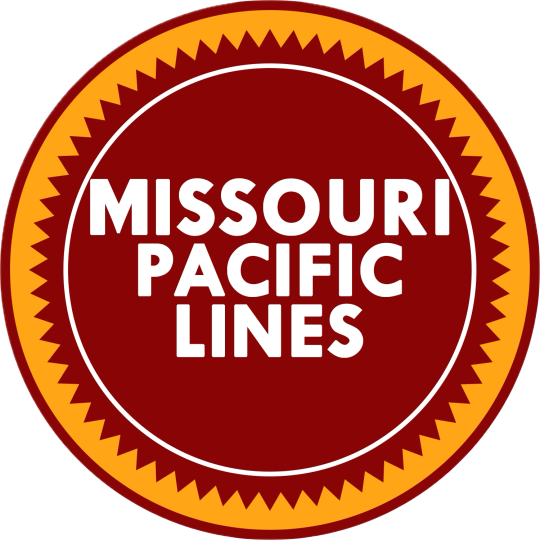
Missouri Pacific ✅
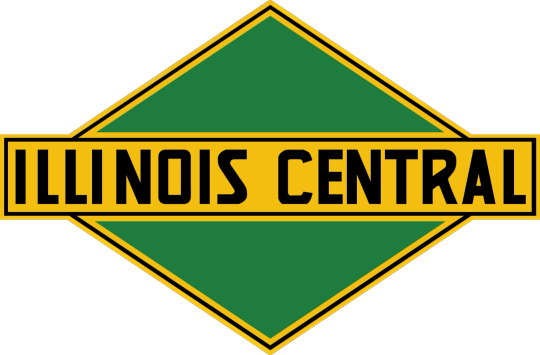
Illinois Central ✅

Gulf Mobile and Ohio ✅

Rock Island Railroad ✅
#the genie team#new york central#pennsylvania railroad#chesapeake & ohio#baltimore & ohio#milwaukee road#burlington route#chicago & north western#northern pacific#southern pacific#union pacific#great northern#santa fe#southern railway#seaboard airline#atlantic coast line#norfolk and western#missouri pacific#illinois central#gulf mobile and ohio#rock island railroad
2 notes
·
View notes





